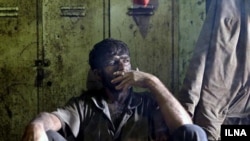Deputy Health Minister Alireza Raisi says the Iranian government has allocated $170 million at subsidized rate to importing tobacco and another $16 million to cigarette paper.
According to Raisi the subsidized rate foreign currency was meant to be spent on importing essential medical supply.
The deputy health minister made the remarks at a ceremony marking the “No Tobacco national Day.”
Raisi said that “the current output of Iranian tobacco factories is around 35 to 40 billion cigarettes, but they aim to increase their output to 80 billion.”
Unlike many countries, Iran still allows advertisement for flavored tobacco products, although the Iranian Judiciary has officially declared a ban on such advertisements.
According to Raisi, most Iranian smokers live in the Central Province and the provinces of West Azarbaijan, Qazvin and Alborz.
There are many rules and legislations against tobacco use but they are not observed by retailers or government authorities. Meanwhile, “Hookah is used the most in the provinces of Bushehr, Hormozgan, Sistan-Baluchestan and Fars. In southern provinces, hookah use is more widespread among women than men,” the Deputy Health Minister told ISNA.
National statistics indicate that smoking rate is the highest among people between the ages of 45 to 54 and about 12 percent of Iranian adults above 15 years old smoke regularly.
The statistics put annual sales of cigarettes in Iran at $238 million.
Meanwhile, another Health Ministry official, Mohammadreza Masjedi, told ISNA that the number of tobacco factories has grown from nine to 17 in only two years from 2015 to 2017.”
In 2017, tobacco killed 3.3 million users and people exposed to second-hand smoke from lung-related conditions world over.






